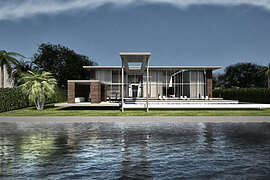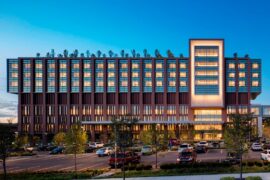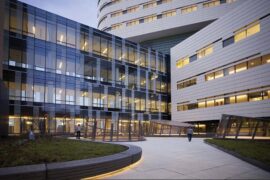The Great Hall of the People, China – World’s Largest Office Buildings
Nestled in the heart of Beijing, The Great Hall of the People stands as an iconic symbol of China’s architectural prowess and political significance. This monumental structure, officially known as the People’s Great Hall, serves as the seat of the National People’s Congress and hosts a myriad of political and diplomatic events. Designed with precision and foresight, this architectural marvel intertwines functionality, cultural richness, and sheer grandeur.
Architectural Design and Planning
Architectural Visionaries
The Great Hall of the People was conceived by a team of prominent Chinese architects, including Zhang Bo, Chen Zhanxiang, and Zhang Jinqiao. The project commenced in 1958 and was completed in a remarkably swift 10 months, showcasing the nation’s dedication to manifesting its political aspirations into physical form.
Architectural Style
Embodying the essence of socialist realism, the architecture of the Great Hall of the People reflects a harmonious blend of traditional Chinese elements and contemporary design. The grandiosity of its structure echoes classical Chinese palaces, while its clean lines and monumental scale showcase a modernist influence.
Building Typology and Uses
The Great Hall of the People is a multifaceted structure with diverse functions that extend beyond its role as a political center. It encompasses a total floor area of 171,800 square meters, housing not only the main auditorium but also numerous meeting rooms, banquet halls, and offices. The building’s typology is characterized by its versatility, accommodating events ranging from political congresses to state banquets.
Interior Design: A Tapestry of Elegance
Grand Auditorium
At the heart of the Great Hall lies the impressive auditorium, with a seating capacity of over 10,000. The interior is adorned with intricate woodwork, traditional Chinese motifs, and colossal red curtains, exuding an air of regality befitting its purpose as the paramount venue for political gatherings.
Banquet Halls and Lounges
The Great Hall’s opulence extends to its banquet halls and lounges, meticulously designed to host state banquets and diplomatic events. Ornate chandeliers, luxurious furnishings, and artistic flourishes contribute to an ambiance that seamlessly fuses tradition with contemporary elegance.
Office Spaces
The building’s functional spaces include offices that cater to the administrative needs of the National People’s Congress. These offices are designed with efficiency in mind, fostering an environment conducive to legislative activities and the formulation of national policies.
Urban Integration
Strategic Location
Situated at the western edge of Tiananmen Square, the Great Hall of the People occupies a central position within the city’s urban fabric. Its location serves both symbolic and logistical purposes, signifying the centrality of political power while facilitating accessibility for delegates and visitors.
Landscape Design
Surrounded by expansive gardens and carefully landscaped grounds, the Great Hall’s exterior is as integral to its design as its interior. The meticulous planning of green spaces adds a touch of tranquility to the bustling political center, creating a harmonious balance between the architectural structure and its natural surroundings.
Facade: A Facet of Grandeur
The facade of the Great Hall of the People is a testament to meticulous craftsmanship and attention to detail. Clad in golden-hued marble, the exterior exudes a sense of permanence and authority. Intricate carvings and reliefs, inspired by traditional Chinese art, adorn the facade, elevating it from a mere building to a work of art.
Conclusion
The Great Hall of the People, with its awe-inspiring architecture, intricate interior design, and strategic urban integration, stands as a testament to China’s rich history and its forward-looking vision. From the grand auditorium to the lush gardens that surround it, every facet of this monumental structure reflects a careful balance between tradition and modernity.
As admirers of architectural excellence, one cannot help but be captivated by the grandeur of the Great Hall of the People. Whether for its political significance, cultural richness, or sheer aesthetic brilliance, this iconic structure continues to draw visitors and scholars alike, offering a glimpse into the intersection of power, culture, and design.
For those intrigued by the intersection of architecture, urban design, and interior design, a visit to the Great Hall of the People is a must. Explore the halls where political decisions shape the nation, marvel at the artistry of its facade, and immerse yourself in the seamless integration of tradition and modernity. The journey through this architectural masterpiece is an enlightening experience that transcends time and political boundaries.

















